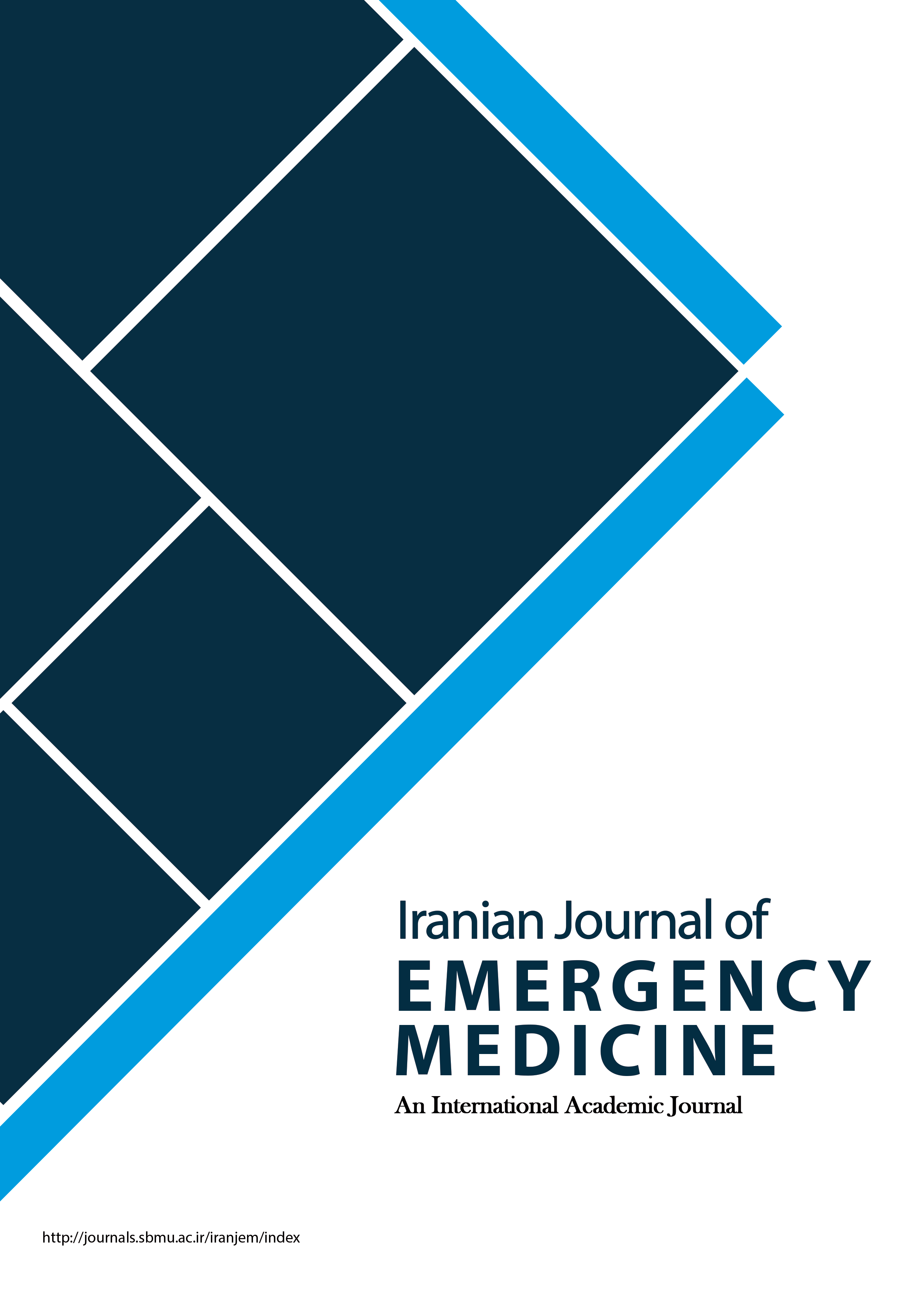Occupational Exposure to Sharp Tools in Emergency Medical Service Staff; an Epidemiologic Study
Iranian Journal of Emergency Medicine,
Vol. 4 No. 4 (2017),
8 October 2017,
Page 152-146
https://doi.org/10.22037/ijem.v2i1.16491
Introduction: Sharp tools are among the major risk factors for transmission of blood borne infections. Therefore, the present study was carried out with the aim of determining epidemiologic aspects of occupational exposure and injury with sharp tools in emergency medical service (EMS) of Dezfoul, Iran, in 2014-2015. Methods: This cross-sectional study was carried out on 140 EMS staff who met the inclusion criteria, using census method. The tool used for data gathering was a questionnaire prepared by the researcher including demographic and personal health data, prevalence and cause of injury with sharp tools, knowledge, mental state, reporting exposure, measures taken, and follow-ups. Data were analyzed using statistical tests such as chi square. Results: Overall, 75% of the participants had been exposed to sharp tools at least once in the past year. Most injuries had occurred during venipuncture of the patient (41.09%). 54.2% of all exposures had happened during transfer. In addition, sadly, 63.9% of the exposures of the staff to patients’ infected secretions were not reported. 63% of injuries with sharp objects had occurred in the night shift. There was a correlation between working experience and frequency of exposure (p=0.02, r=0.19). Conclusion: The results of the present study are indicative of the high occupational exposure to sharp tools among staff of the studied EMS, a significant number of which had not been reported.



